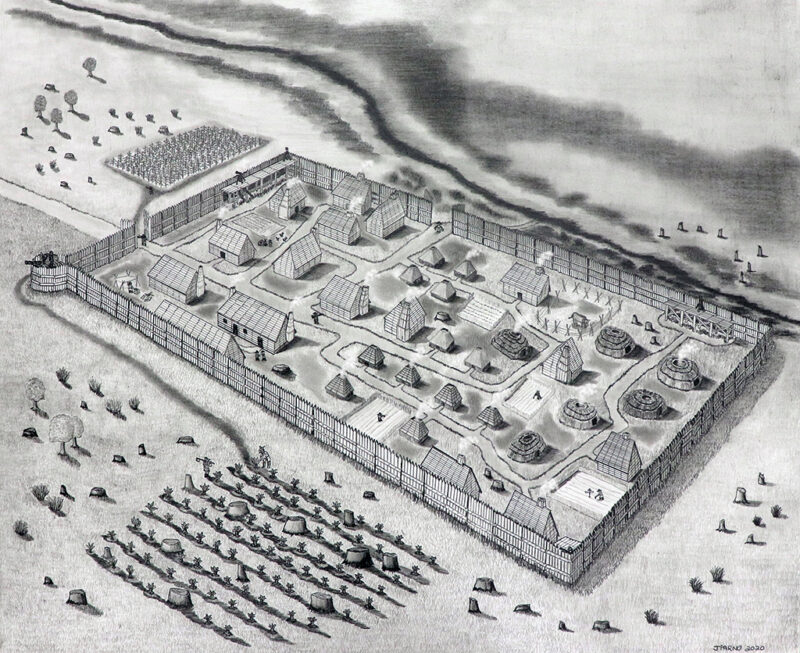 Historic St. Mary’s City announces that Dr. Travis Parno, Director of Research and Collections for Historic St. Mary’s City and his team have located the site of the original St. Mary’s Fort, the 1634 palisaded fort erected by the first wave of European settlers who founded Maryland. The site, which spans an area approximately the size of a football field, is located in Historic St. Mary’s City (HSMC) in Southern Maryland. A formal online announcement will premiere March 25, Maryland Day, 2021 at 7 p.m. on the museum website http://www.HSMCdigsHistory.org.
Historic St. Mary’s City announces that Dr. Travis Parno, Director of Research and Collections for Historic St. Mary’s City and his team have located the site of the original St. Mary’s Fort, the 1634 palisaded fort erected by the first wave of European settlers who founded Maryland. The site, which spans an area approximately the size of a football field, is located in Historic St. Mary’s City (HSMC) in Southern Maryland. A formal online announcement will premiere March 25, Maryland Day, 2021 at 7 p.m. on the museum website http://www.HSMCdigsHistory.org.
“Finding the location of Maryland’s original settlement is truly exciting news for our state and will give us an opportunity to reconnect with our pre-colonial and early colonial years,” said Governor Larry Hogan. “The state has been proud to support the study of St. Mary’s Fort and looks forward to further excavation of the area as we approach our state’s 400th anniversary,” Governor Hogan added.
St. Mary’s Fort was the first major foothold of European settlement in the state and the fourth English colony in the country after Jamestown (1607), Plymouth (1620), and Massachusetts Bay (1630).
In March of 1634, approximately 150 Maryland colonists arrived on two ships, Ark and Dove, in an area that was home to the Yaocomaco, a tribe loosely allied with the Piscataway paramount chiefdom. What little is known about this period is drawn from English colonial records. The archaeological study of St. Mary’s Fort has the potential to unearth new information about Maryland’s pre-colonial and early colonial past.
Members of the HSMC Department of Research and Collections have been conducting fieldwork within the St. Mary’s City National Historic Landmark area since 1971, but definitive traces of St. Mary’s Fort remained elusive until a 2018 grant from the Maryland Historical Trust allowed Parno to hire geophysicist Dr. Timothy J. Horsley to survey two suspected locations using magnetic susceptibility, magnetometry, and ground-penetrating radar. The results, which were verified via a brief archaeological dig, confirmed the fort’s exact location.
The study of St. Mary’s Fort is part of a larger initiative titled People to People: Exploring Native-Colonial Interactions in Early Maryland, scheduled to begin in 2021. Created as a collaborative effort between Historic St. Mary’s City and Piscataway tribal participants, the project will include archaeological excavations at St. Mary’s Fort and indigenous sites near the fort, interpretation and exhibits of native and colonial culture, and public programming about life in the region in the years prior to and during the early seventeenth century.
Parno is currently consulting with Piscataway tribal participants and other stakeholders, and excavations of St. Mary’s Fort are ongoing thanks to the support of private donors and funds provided by Governor Hogan’s office. With the support of the State, St. Mary’s Fort will be integrated into Historic St. Mary’s City’s living history program in time for the state’s 400th anniversary in 2034. In the meantime, the excavation site is open during public visitation hours.
Please see http://www.hsmcdigshistory.org for hours and availability.



